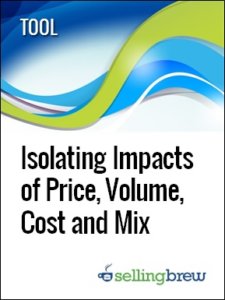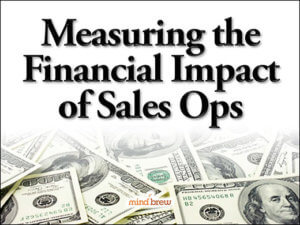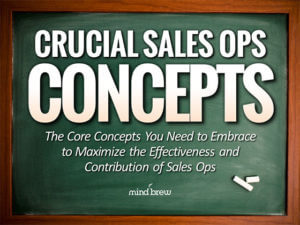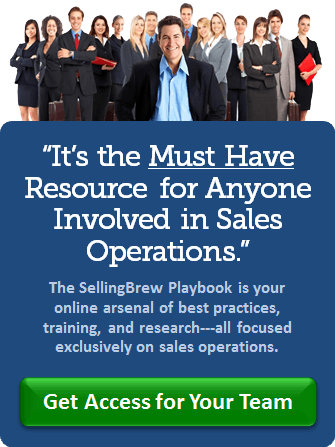After any particular quarter closes, can you explain why the final numbers look the way they do?
For example, could you explain to the management team why profit contribution took a massive hit…even though the sales team actually blew away their revenue targets? Conversely, could you explain why profits shot way up…even though the team missed the revenue goal by a mile?
Could you show management…in dollars and cents…the extent to which the financial results were influenced by seasonal changes in mix? Could you quantify exactly how much of the profit improvement came from cost reductions versus mix shifts? Could you enumerate what portion of the revenue gain was from selling more volume versus selling at slightly higher prices?
By being able to answer these types of questions and provide more of the “why” behind the financial results, Sales Ops can:
- Reduce the potential for others to make poor decisions in the future based on inaccurate conclusions about the past.
- Correctly diagnose performance “symptoms” to help resolve real problems and emulate what’s actually working well.
- Explain and quantify the financial impacts of various improvement efforts and ongoing sales effectiveness initiatives.
- Become a trusted advisor to the management team by providing much more clarity into the dynamics of the business.
While the benefits are fairly clear, the process for gleaning these sorts of post-game answers and insights is not entirely obvious. And on the surface, it can even seem as though this type of analysis might actually be so complicated that it’s beyond the capabilities of a typical Sales Ops group.
However, when you boil it down to the essentials, it’s just another comparative analytical process…
First, you set up a comparison of one period to another in terms of products, unit volume, revenue, cost, and margin. Then, you hold volume, price, cost, and mix constant from the base period…one at a time…and project what would have happened in the current period had nothing changed.
By doing this in the proper step-wise sequence, you can effectively “deconstruct” period-to-period performance changes and quantify exactly how much each element contributed to differences in revenues and margin dollars.
Though this type of analysis isn’t rocket science, we’ve published a spreadsheet tool to the SellingBrew Playbook to make it as easy as possible for our subscribers to get started. The tool does most of the heavy lifting for you—you simply input the basic performance data for the products and periods you want to compare and the tool will automatically isolate and quantify the volume, price, cost, and mix contributions to revenue and margin.
Now, how’s that for eliminating excuses? 🙂












